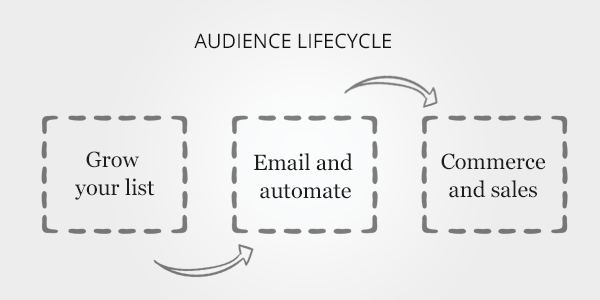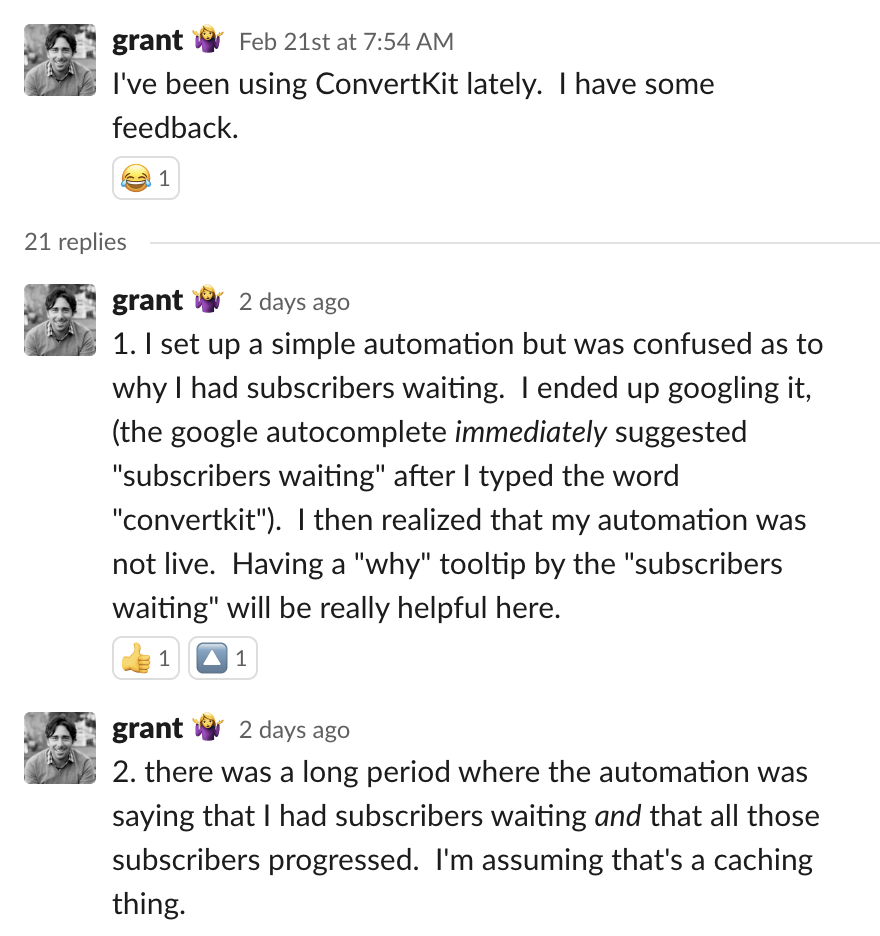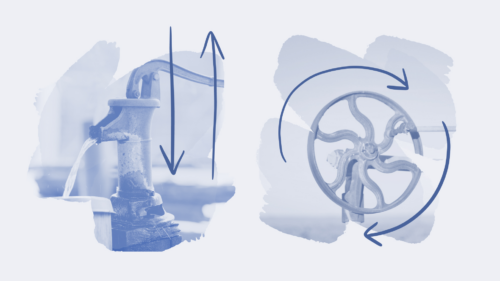What makes some products great and others painful to use? At a conference this weekend I was discussing this question with a few friends. Is it complexity? A lack of product people on the team? Experience building software?
Those all matter, but I wanted to distill them to principles teams could keep coming back to. Here are three secrets to a great product:
- Stay focused on a core problem or customer.
- The team should use the product every week.
- Consistently execute on the founders vision.
1. Stay focused on a core problem or customer
Products become bloated not by listening to customers too much, but by listening to the wrong customers.
Not all customer feedback is created equal. That’s why you should be careful building a feature to close a deal, allowing customers to vote features up and down, or taking all feature requests at face value.
A product roadmap through democracy is suicide.
Instead have a clear vision for either the customer you are serving or the specific problem you are solving. When feedback comes from outside that focus, make a note of it, and then set it aside. Customers will come from outside your market and it’s fine to support them. But remember that if they aren’t your core focus they need to adapt their workflow to your product, rather than expanding your product to fit their workflow.
Product footprint
Think about each new feature or customer segment as increasing the product footprint. Does this change give you a new category of features to support? Does it take you into a new market that has different needs from the market you already serve?
Doing either one needs to be a deliberate decision, otherwise in a year you’ll find your entire team scrambling to keep up.
As creators work to earn a living from their audience they need three things: a way to collect subscribers (forms and landing pages), a way to contact them (sequences and broadcasts), and a way to sell products (checkout, payments, and product delivery). In our mission to help creators earn a living we have the middle covered quite well. So where should we go next?

We chose to build out how subscribers join a list for a few reasons:
- It’s the first step in the process so we can help beginners find initial success.
- It’s closer to our existing workflow since we already have basic forms and landing pages.
By going deeper on our current workflow we are able to deliver more value, without adding an entirely new direction. We already answer questions about embedding forms or customizing landing pages. Now we will just have better tools to answer those questions.
Whereas if we added checkout functionality we would be supporting an entirely new business venture. That would mean new categories of support tickets, fighting spam and fraud on a new front, and a lot of new code to write.
Go deep, not wide.
Ultimately customers want simple software, done well.
2. The team should use the product every week
I often use a product and think, “when was the last time the designer used this as a customer?”
In many cases they did in the beginning, but now the designers purely rely on feedback from customers rather than hands on use.
Testing to see if a feature matches the spec is completely different than truly using the software as a customer.
ConvertKit was founded because, as a blogger, I needed a better email system. For years I used ConvertKit every day, but then as my focused moved from being a blogger to running a software company, I had to rely on customer feedback rather than my own experience to shape the product.
Now that I am back to growing my own audience I can do both: use ConvertKit as a customer to find issues and work in the business to get them fixed.
Side projects
This is one of the reasons we encourage the team to have their own side projects as creators. Not only do they have another creative outline to learn new skills, but more importantly, they use ConvertKit each week as a customer.
When Grant, our director of engineering, used ConvertKit to promote his side project (Ultralist: a command line todo list app), he immediately ran into frustrating elements of our product.

These issues were both already logged in our bug tracker, but with everything else going on it was hard to get them prioritized. But now that our team has experienced them first hand, they are more likely to get fixed quickly.
Whenever I’m forced to use a cluttered, complex, or painful tool I can’t help but think that the creators don’t actually use it themselves anymore.
3. Purposefully driving forward the founders vision
The greatest gift a competitor can give you is selling to another company and leaving the company. Most product companies flounder once they lose the original product vision. Many continue to make great revenue, but never again have the same drive and focused user experience.
Apple is the classic example. All the work Steve Jobs did to focus the product line after his return in the 90s has been undone. The only focus Apple’s product line has now is increasing average revenue per customer.
Evernote is being eclipsed by new productivity tools after Phil stepped away. Drip lost their direction after Rob left. Travis CI started to flounder after the founders started leaving. Then their product fate was sealed with a private equity acquisition.
Without one central vision the product roadmap and customer focus turns into a democracy. It’s not that the suggested directions are wrong, but that they can’t help but compete with each other for resources. Inevitably you break the first principle and spread the product thin through feature bloat.
Each great idea stretches and pulls every resource in the company. Before you know it just providing support for these features and customers is all the organization can handle.
That’s the beginning of the end.
But it doesn’t have to end that way. Instead try:
- Staying focused on the core problem and customer
- Using the product as customers every week
- Committing to one product vision to avoid chasing every new direction
Follow those and you’ll end up with simple software, done well.



Very good points to think about when building a product. My problem is even before though, I can’t really think about a useful product to build. You mentioned that for ConvertKit you were a blogger for many years, so it solved a problem you had. What if you are not in that situation and have no idea of which audience to help and how to discover things you could improve for them?
“What if you are not in that situation and have no idea of which audience to help and how to discover things you could improve for them?”
@Eric, one way I found worked for me is to ask people questions and to then listen. I find people are sometimes more than happy to tell you the problems they are facing, and often things you didn’t think of.